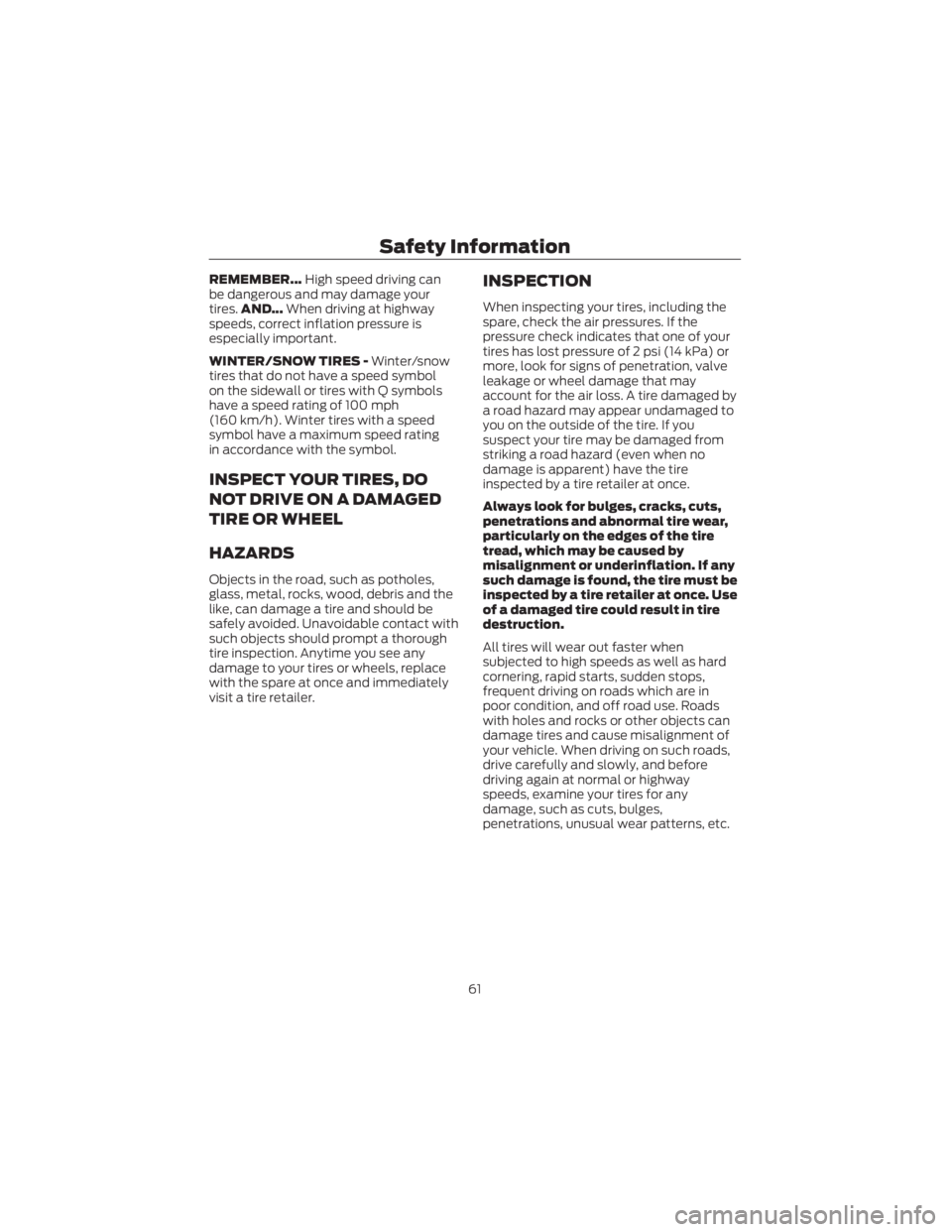REMEMBER...High speed driving can
be dangerous and may damage your
tires. AND... When driving at highway
speeds, correct inflation pressure is
especially important.
WINTER/SNOW TIRES - Winter/snow
tires that do not have a speed symbol
on the sidewall or tires with Q symbols
have a speed rating of 100 mph
(160 km/h). Winter tires with a speed
symbol have a maximum speed rating
in accordance with the symbol.
INSPECT YOUR TIRES, DO
NOT DRIVE ON A DAMAGED
TIRE OR WHEEL
HAZARDS
Objects in the road, such as potholes,
glass, metal, rocks, wood, debris and the
like, can damage a tire and should be
safely avoided. Unavoidable contact with
such objects should prompt a thorough
tire inspection. Anytime you see any
damage to your tires or wheels, replace
with the spare at once and immediately
visit a tire retailer.
INSPECTION
When inspecting your tires, including the
spare, check the air pressures. If the
pressure check indicates that one of your
tires has lost pressure of 2 psi (14 kPa) or
more, look for signs of penetration, valve
leakage or wheel damage that may
account for the air loss. A tire damaged by
a road hazard may appear undamaged to
you on the outside of the tire. If you
suspect your tire may be damaged from
striking a road hazard (even when no
damage is apparent) have the tire
inspected by a tire retailer at once.
Always look for bulges, cracks, cuts,
penetrations and abnormal tire wear,
particularly on the edges of the tire
tread, which may be caused by
misalignment or underinflation. If any
such damage is found, the tire must be
inspected by a tire retailer at once. Use
of a damaged tire could result in tire
destruction.
All tires will wear out faster when
subjected to high speeds as well as hard
cornering, rapid starts, sudden stops,
frequent driving on roads which are in
poor condition, and off road use. Roads
with holes and rocks or other objects can
damage tires and cause misalignment of
your vehicle. When driving on such roads,
drive carefully and slowly, and before
driving again at normal or highway
speeds, examine your tires for any
damage, such as cuts, bulges,
penetrations, unusual wear patterns, etc.
Safety Information
61
